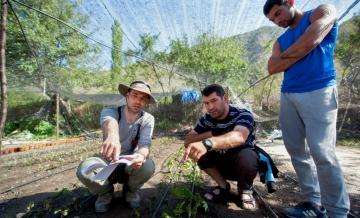Insurance Schemes: Policy Case Study on Inclusive Business

Insurance programmes for people at the bottom of the economic pyramid (BOP) empower them to participate in markets by protecting them against risks such as illness, injury, damage, or loss. People at the BOP are often more vulnerable to such risks because they are less able to cope with the financial burden caused by unexpected occurrences. Despite this, the BOP is typically ignored by mainstream commercial insurers. Micro-insurance schemes are built to cover people excluded from statutory social security, especially workers in the informal economy and their families. Governments can share the risk of covering BOP communities by: providing fully or partially subsidized coverage for specific services; or paying customers’ premiums and entrusting private-sector insurers with insurance coverage.
Insurable risks should have a low probability of occurrence, yet strong adverse consequences if the risk does occur. This is where risk-pooling mechanisms come into play. Since part of the individual risk is borne by the entire group of policyholders, individual risk premiums can be relatively low in relation to the size of a potential loss; the more frequent the loss occurs, the more difficult it becomes to insure. The greater the chance of an event occurring, the closer premiums will be to the amount of a potential loss, which means that the event will no longer be insurable at a price that clients find acceptable.
Risks are uncertain events (e.g. drought) or outcomes (e.g. famine). When a risk occurs, it can damage people’s well-being. A risk’s occurrence with a negative impact is called an adverse event or a shock. Uncertainty may relate to:
- The occurrence (will the adverse event occur?)
- The timing of the event (when will it occur?)
- The severity of the shock (will the shock be serious or minor?)
- Its duration (how long will the shock last?)
- Its frequency (how often will it occur?)
In developing countries, many households and communities face multiple risks, but workers in the informal economy and their families, poor people and those with low incomes are particularly exposed to – and negatively affected by – the impact of:
Natural risks, such as drought, flood, erratic monsoon rains, crop pests and fire that can cause loss of assets including loss of work premises and tools;
- Environmental risks such as problems associated with deforestation and pollution;
- Health risks such as sickness, complications with child delivery and epidemics;
- Life-cycle risks such as old-age and death;
- Economic risks such as unemployment, business or harvest failure, loss of assets and death of livestock;
- Policy-based and institutional risks such as a lack of legislation to protect workers, insufficient public services (e.g. a lack of healthcare facilities or inappropriate public health care policy) and taxation; and
- Social and political risks such as crime, theft and related loss of assets, gang activity and civil war.
When the potential for such risks is high and the impact is critical for affected individuals and households, micro-insurance can be an effective solution. Micro-insurance not only protects policyholders from potentially devastating risks, but also reduces the burden of such risks on public spending. Insurance schemes can be applied as preventative measures such as preventative healthcare and pre-distributed weather index insurance for expected climate-related losses (see the case study below on El Niño Business Interruption Index Insurance). Or they can be used to help those experiencing risk get back on their feet at a much faster pace. Thus, insurance should improve overall productivity.
This research note introduces common elements and success factors of insurance schemes, provides case examples and information about the implementation, identifies ideas for further research and knowledge gaps.